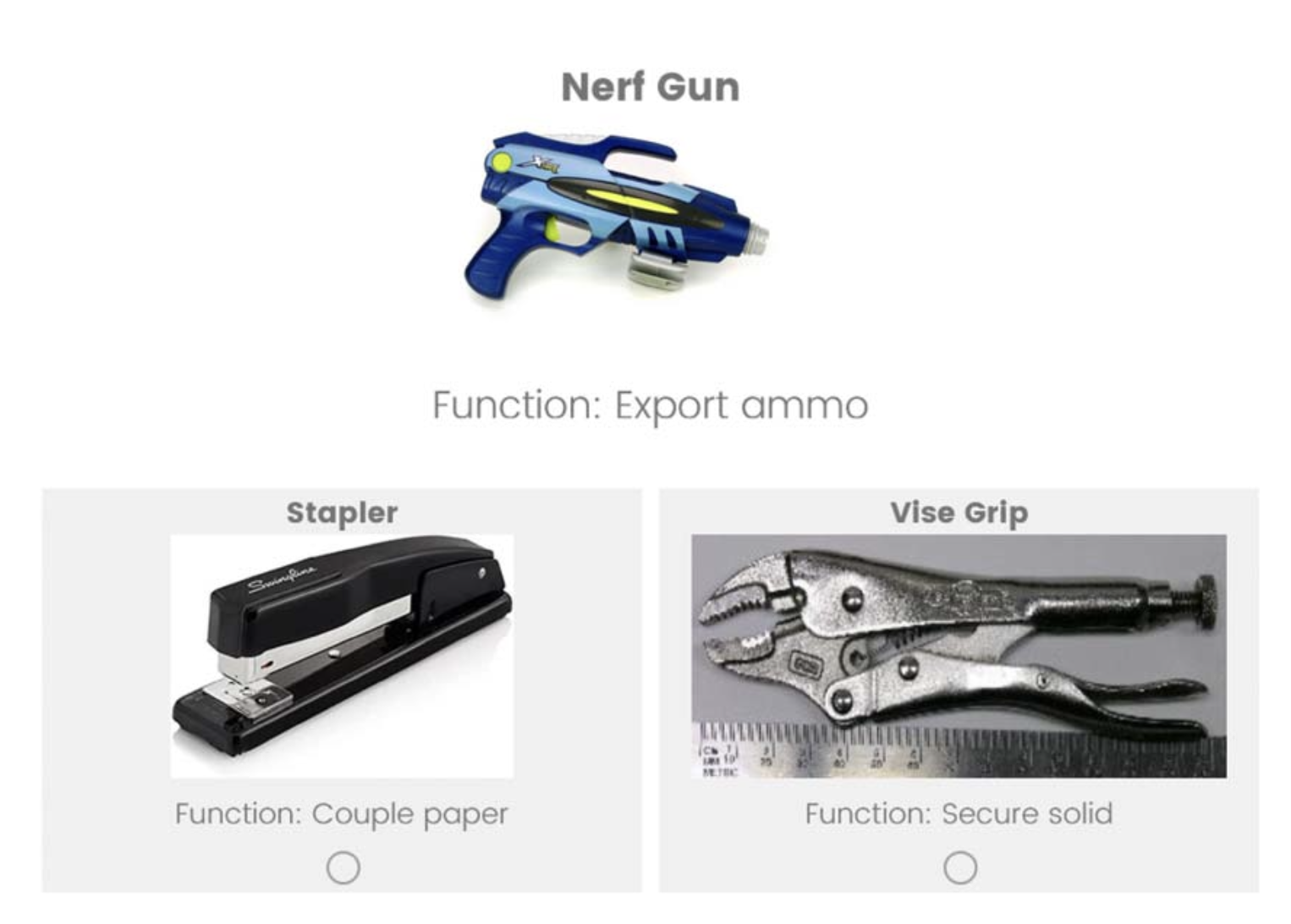Abstract
Function drives many early design considerations in product development, highlighting the importance of finding functionally similar examples if searching for sources of inspiration or evaluating designs against existing technology. However, it is difficult to capture what people consider is functionally similar and therefore, if measures that quantify and compare function using the products themselves are meaningful. In this work, human evaluations of similarity are compared to computationally determined values, shedding light on how quantitative measures align with human perceptions of functional similarity. Human perception of functional similarity is considered at two levels of abstraction: (1) the high-level purpose of a product and (2) how the product works. These human similarity evaluations are quantified by crowdsourcing 1360 triplet ratings at each functional abstraction and creating low-dimensional embeddings from the triplets. The triplets and embeddings are then compared to similarities that are computed between functional models using six representative measures, including both matching measures (e.g., cosine similarity) and network-based measures (e.g., spectral distance). The outcomes demonstrate how levels of abstraction and the fuzzy line between “highly similar” and “somewhat similar” products may impact human functional similarity representations and their subsequent alignment with computed similarity. The results inform how functional similarity can be leveraged by designers, with applications in creativity support tools, such as those used for design-by-analogy, or other computational methods in design that incorporate product function.
